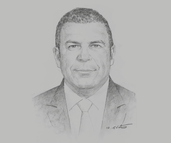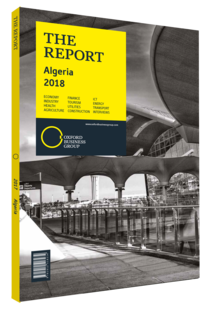Nabil Assaf, Representative, Food and Agriculture Organisation of the UN : Interview

Interview : Nabil Assaf
How would you assess Algeria’s achievements in the agricultural sector in recent years?
NABIL ASSAF: For several years Algeria has performed well in terms of food security, as confirmed by the 2017 “Near East and North Africa Regional Overview of Food Security and Nutrition” report, which indicates a sub-nutrition rate of 4.6%. This is lower than the regional average and is steadily declining. While imports certainly contribute to this security, agriculture has been increasing, and in 2018 local agriculture covered 75% of national needs. The country has made great progress and continues to improve, with the agriculture sector having the highest growth rate, at nearly 10% in 2018.
This is the result of several factors, including the development of irrigated perimeters. Irrigation has seen progress not only in terms of area – from 800,000 ha in 2008 to 1.3m in 2018 – but also in practice, with the widespread use of water-saving technologies. The FAO’s regional initiative for water scarcity aims to increase both the mobilisation of water and water productivity, which is the amount of wealth produced per litre. Water mobilisation has allowed for the ongoing development of Saharan agriculture, as well as provided ongoing opportunities for El Oued and Biskra to become top national producers.
Aquaculture is another sector that was virtually non-existent years ago. In 2018 the Ministry of Agriculture, Rural Development and Fisheries (Ministère de l’Agriculture, du Développement Rural et de la Pêche, MADRP) awarded 145 concessions for marine aquaculture. The association of aquaculture with agriculture has given excellent results in the far south, which can now rely on this source for food security.
What sustainable and efficient models can be used to unlock Algeria’s agriculture potential?
ASSAF: There are three main factors that will continue to improve performance. First, water must be made available for agriculture. The government aims to extend irrigated areas to 2.3m ha. The FAO has been working to improve water mobilisation mechanisms and to increase water productivity, which includes focusing on non-conventional water use in agriculture.
The second factor is sustainable mechanisation. A recent joint study by the FAO, MADRP, and the Ministry of Industry and Mining revealed that the park is ageing. We are working on a strategy to help equip small farmers, who strive to provide excellent quality food but have experienced low overall productivity.
The third component is diversification. Algerian agriculture has diversified, but there is still room to increase the contribution of natural resources. Forests, for example, are particularly rich in biodiversity, and offer a range of goods and services that have environmental, nutritional, medicinal or industrial value. Therefore, the FAO is developing a project for the integrated development of the Algerian cork oak forest ecosystems in order to preserve and enhance its value. We are also providing technical assistance to microenterprises focusing on non-timber forest products such as pine nuts, carob and rosemary.
To what extent do you foresee international investors increasing their footprint in Algeria?
ASSAF: Algeria has both large land area and significant water resources, especially in the south; however, these resources are not renewable. This is one of the factors that makes the region particularly attractive to international investors. Pilot farms in the highlands and in the north will also be open for investment. With the emergence of major Algerian investors in agriculture, additional partnerships will continue to emerge in the coming years.
Nevertheless, a national agency dedicated to the promotion of agricultural investments could help to orient international investors by offering them a platform for establishing exchange and partnerships.
You have reached the limit of premium articles you can view for free.
Choose from the options below to purchase print or digital editions of our Reports. You can also purchase a website subscription giving you unlimited access to all of our Reports online for 12 months.
If you have already purchased this Report or have a website subscription, please login to continue.

